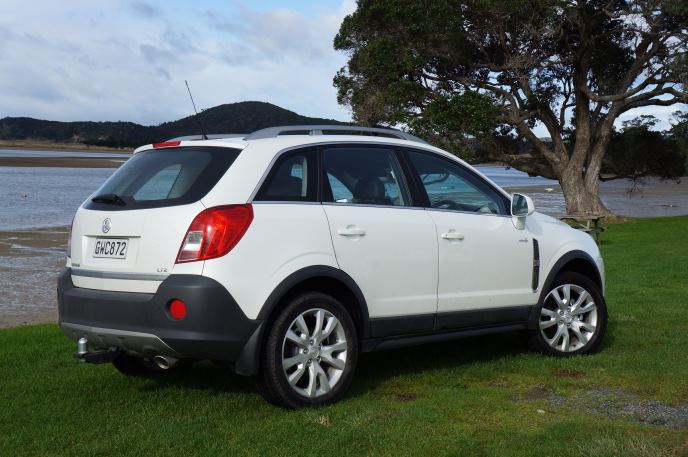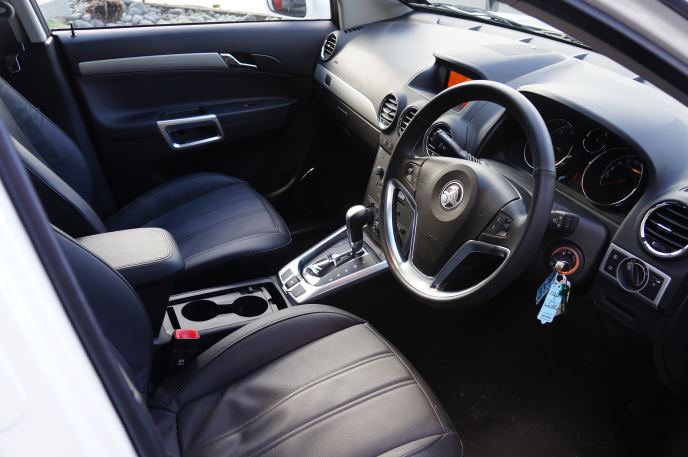Holden Captiva 5 LTZ 2013 new car review
Taking the Captiva 5 immediately after the Holden Cruze I was surprised at the difference in interior trim.

Taking the Captiva 5 immediately after the Holden Cruze I was surprised at the difference in interior trim. The Captiva’s screens and controls look like they’re a few years older than the Cruze’s; does the rest of the car feel dated? Let’s find out.
- Good levels of safety
- Plenty of room
- The noisy diesel engine isn’t as frugal as it should be
- Showing its age
- Uncomfortable seats
Taking the Captiva up north to Tutukaka its on-road manners were quietly confident. Cornering and braking were as to be expected from a modern compact SUV. The rear suspension is multi-link and the front is MacPherson strut which provides for better driving dynamics than some of the competitors, and it can be driven with a good deal of enthusiasm.
On the road
Both leather front seats have spectacularly warm seat heaters but are left wanting for long-range comfort, feeling a little hard. The driver’s seat has 8-way power adjustment so it was easy to get a good driving position.
Apart from the engine being noisy at idle and under heavy acceleration, the cabin is fairly quiet at speed. The 2.2-litre 4-cylinder turbodiesel is joined up to Holden’s Gen II six-speed automatic transmission. You can get the Captiva 5 with a 6-speed manual and with a 2.4-litre petrol engine, both options will make it cheaper still. Or you can get it with optional active all-wheel drive, which makes it more expensive.
Fuel economy is quoted at 8.2l/100km combined consumption. The best I got was in the 9s and that was predominantly a motorway drive on my own. I’m not sure how Holden managed their figure because it doesn’t seem to maximise the 135kW or 400Nm of torque.
Inside and out
In the back, there are extremely useful fold-flat seats which will give you up to 865 litres of space, or 430 litres when the back seats are up. The boot floor is quite high as it needs to fit the spare wheel underneath, though this does mean that it sits flush with the boot aperture, making loading very easy.
Holden has played it safe with the Captiva’s design, which is coherent and inoffensive. It has a European look (it’s also sold in Europe under the Opel badge) which is the perfect mix of chunky yet refined. The side fender vents and front fog lamps add some visual interest. Undoubtedly it’d look a little better on 18-inch wheels rather than the 17-inch five-spokes, but that would definitely make the ride harsh.
Holden has crammed six airbags in the Captiva, as well as Electronic Stability Control (ECS), anti-lock brakes (ABS), Electronic Brakeforce Distribution (EBD), Traction Control System (TCS), Brake Assist (BA), Active Rollover Protection (ARP), Descent Control System (DSC) and hill start assistance. That set of acronyms takes care of you in any emergency manoeuvres.
Overall
The compact SUV is a hotly contested market segment and I don’t think Holden has done enough to eclipse the Mazda CX-5 and Toyota RAV4. Even though this model was facelifted recently, it’s really a six-year-old car and is missing Bluetooth audio streaming, keyless entry and other features that are pretty much standard in competing vehicles.
Note: this was reviewed as a new vehicle.
Image gallery
Also consider





